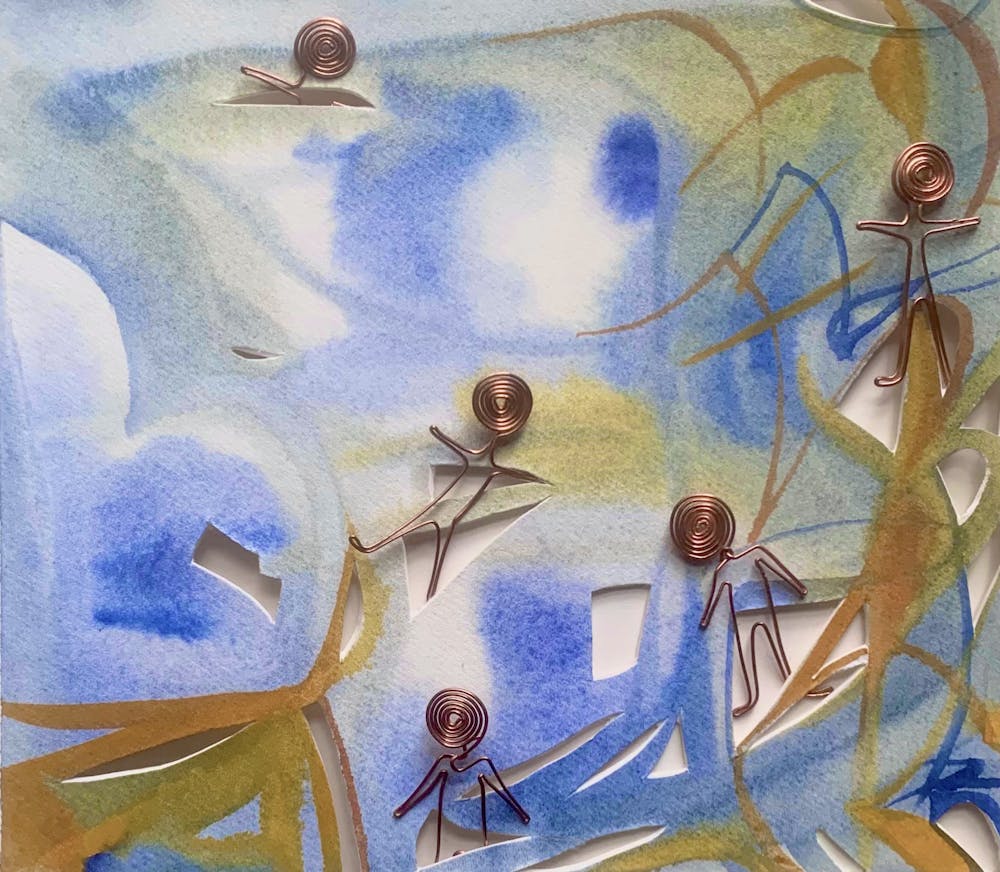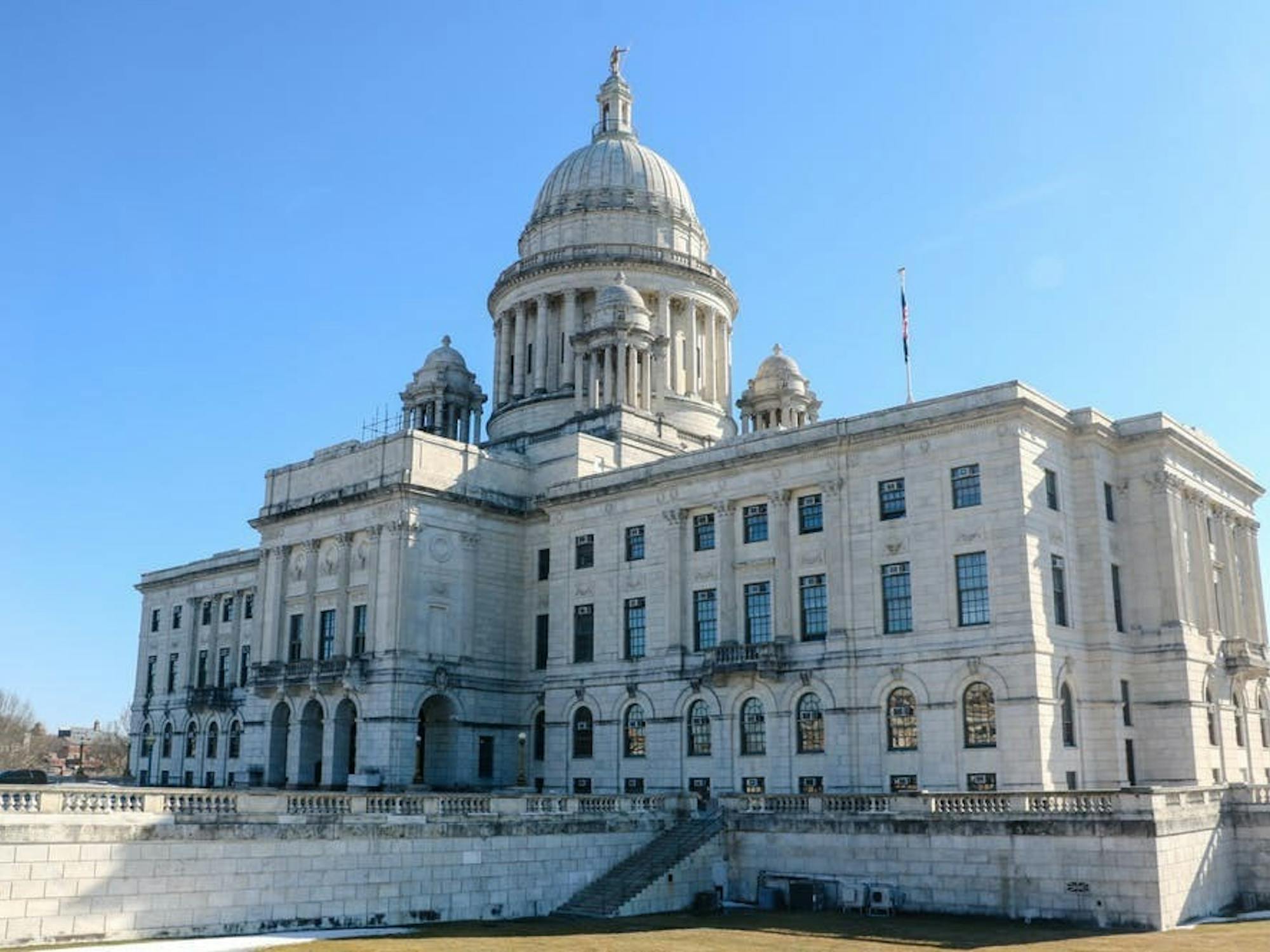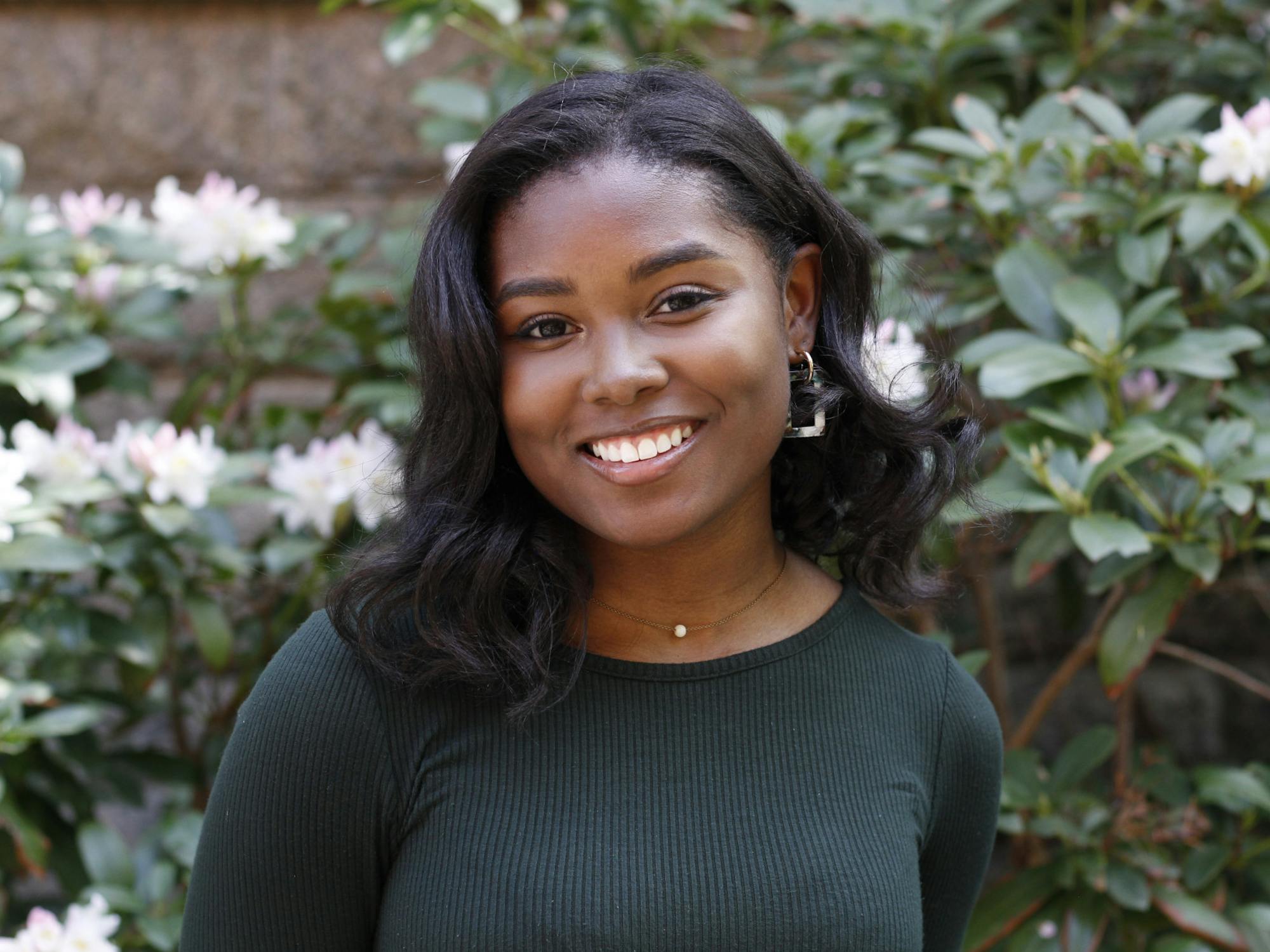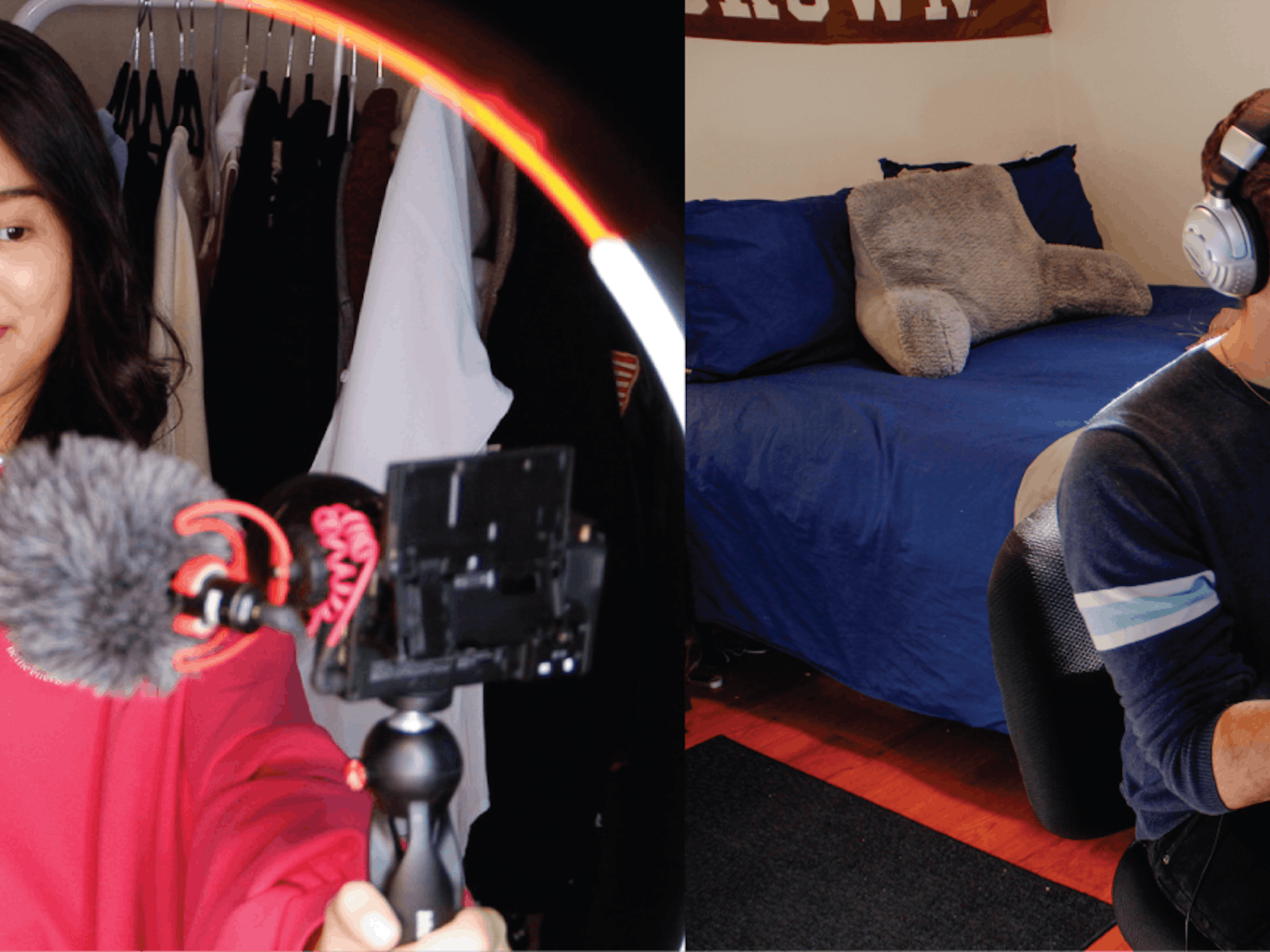In her aggressively air-conditioned studio, Asher White—musician, visual artist, writer—struggles to keep a blanket up around her shoulders as she looks for a pencil and paper. She wants to explain to me how she conceptualizes songwriting using a graph with four quadrants. The graph is structured around material constraints: low to high frequencies as the x axis, and left to right channels as the y. “Now,” she says, “It’s just like painting.”
I work primarily in painting and sculpture and am completely mystified by musicians. “I don’t understand how someone could imagine a melody that doesn’t yet exist,” I say to Asher, teeth chattering. She counters, “How do you approach making sculptures that don’t exist?” When I tell her it’s mostly poking around, trying things on for size, and waiting for something to fit, she says, “Well, there you go.” She continues to populate the chart.
My relationship with visual art is owed to a positive feedback loop that began in middle school. Compliments on my ability to draw very skinny girls encouraged further dedication to this practice. Eventually I found myself to be an Art Girl. This vague blueprint maps onto current Brown senior Maya Polsky’s inception as a guitarist, as well as RISD senior Asher’s early days as a drummer—although both these creators had a sprinkle of child prodigy in the mix as well. Early technical ability brought positive attention, breeding an early self-conception tied to music. This phenomenon in children develops a confidence with self-expression that is difficult to claim later in life, essential to art-making, and most importantly, not restricted to whatever medium first gave it platform.
When artistic identity is brought about by early technical prowess in a given creative discipline, a label of painter, violinist, photographer—name your discipline—can obscure a deeper identification as a simply creative person. I don’t mean to defile the romance between an artist and their medium. A lifelong loyalty to a craft is a beautiful thing; when Maya speaks with me about the early days with her guitar, her voice swells with a confused emotion that I recognize as what a non-spiritual person sounds like when they reckon with the source of faith in their life. However, fluidity between abstract languages is already a fixture in many artists’ brains. Developing a flexible relationship between mediums materializes that unconscious thought process and can be a generative force in one’s work.
For instance, Maya has a heavily visual slant to her conception of sound, always coming back to form, texture, and space. “What shape is the song?” she asks the students in the introductory music class for which she TAs. “Are the notes dark and fuzzy, or bright and pointy? Do they sound close or far away?” While I don’t think Maya should sell her instruments to buy a kiln, I do wonder what might happen to her music if she brought some Sculpey to the recording studio.
In Asher’s studio, color takes on the brunt of the translation work. Moving quickly and not making eye contact, she looks at her graph and pushes a black circle of ink out of the pen onto the bottom left quadrant. “That’s purple,” she says. Asher doesn’t wonder whether or not I understand what purple sounds like. Even as I smile instinctively at the gravity with which she talks about synesthesia, I can’t help but hear this heavy purple shape as it weighs down on the page. Nor can I help but feel a sense of relief when she restores balance and gives the upper-right corner of the chart a sisterly blob. “Dark pink.”
“All art is metaphor,” Maya says, visibly uncomfortable with hearing herself say this cliché outloud. “We are constantly looking for metaphors for our metaphor.” I call on something our mutual friend, Talia Mermin, visual artist and writer, once said to us. “Metaphor is like a spinning top—it works until it doesn’t,” (she was paraphrasing Anne Carson who was paraphrasing Franz Kafka, but in my opinion, Talia said it best). Musicians like Maya and Asher poach the vocabulary of fellow disciplines as a way of keeping their tops spinning, building a Jenga tower out of sibling abstractions. Approaching the same idea through multiple abstract languages is like adding circles to a venn diagram until the center shrinks to a truth.
When we think of songwriting as painting, or video as dance, or writing as collage, the question of whether certain ideas are better suited for certain mediums looms larger. A few years ago, I began struggling with the question of, “why paint?” Wanting to communicate my surroundings as I saw them, (inexplicable, organized, and perfect), I was frustrated with how painting fixed my world onto a canvas where it was, at best, a lesser version of itself and, at worst, a self-portrait. So, I made the descent from the light-strewn painting studio to the windowless sculpture dungeon, where a three-dimensional practice did these interests greater justice.
But for many artists like Eve O’Shea (Brown ‘20), the question of “why paint?” is easy. It’s not that other mediums don’t interest her; she is a dedicated writer and has exciting ideas for future work in photography, but nothing can pull her focus from painting. “There’s so much left for me here,” she says about the medium. “I’m only at the beginning.” Eve has a rare kind of patience and faith, both in herself and in the work. As a sophomore in a neighboring studio, I would watch as she ritually applied washes of purple upon green upon blue with no end in sight. One day, I’d just walk in and see a finished piece. “Mastery is awesome,” she says. Painting will remain fixed on her horizon until she feels she has grasped it.
Meanwhile, Loren Wang (Wesleyan ’24), spoke to me about how a sustained focus on one medium can lead to stasis. They are eager to develop their work in performance, writing, and sculpture, but find themselves coming back to video, their original medium, despite a nagging staleness. Having worked with these tools for years, they find muscle memory kicking in. “I’m not making work if I’m comfortable,” they say solemnly. Within one mode of production, it becomes hard to tell your interests apart from your habits.
Developing a relationship with any medium involves the accumulation of neuroses and insecurities. Memories of failure linger, the pressure for novelty persists, and the question of audience demands to be confronted. Critical discourse, historical precedence, and role models can all cloud intuition and make simple decisions fraught. These mental plagues fester when you don’t take space from your work. Of course, taking a break offers its own can of worms (productivity anxiety, imposter syndrome, questioning foundational sense of self). But developing fluency in another medium can allow you to take a step back from the studio without feeling disconnected from creativity. It’s like a secret trap door between a rock and a hard place.
I have a reliable internal clock which, every two to three months, delivers an acute feeling of helplessness with the possibility of making visual art. I begin to feel like I'm throwing all the nuance in my head into a big bucket like the ones used to toss chicken wings in buffalo sauce. My dreams of articulating myself with clarity, weight, and wit die in the face of this glistening amorphous form. I am left to dump it all onto a plate, push it across the table, and hope for the best. That’s when writing, with its clauses, punctuation, synonyms—an all-you-can-eat communication buffet—becomes so appealing. But before long, the exactitude of writing becomes suffocating, and I miss the buffalo sauce. Wishing I could offload authorship and blur out ideas, the once-frustrating ambiguity inherent to visual art now promises a unique kind of freedom. This epiphany (“art is actually great”) surprises me every time.
In a recent effort to walk the walk, I tried writing a song and found it to be one of the more uncertain and vulnerable experiences of my recent life. The 1-minute-20-second result was comfortably mediocre, and SONG?.mp3 will sink peacefully to the bottom of my files. But now I find conversations with musicians to be more elucidating than baffling, I hear decisions in music where before was only mystery, and I find myself mentally leafing through the Garage Band sound library when on the prowl for new textures and shapes.
Translation between art forms can offer a glimpse of whatever brought us to art in the first place. A new material lens is a chance to escape our own tropes and catch sight of the core values underneath. Maya tells me of an early music teacher who taught her that all music is tension and release—something called a V-I structure. She says, “all music is going somewhere and going home.” Some artists will find their home in the constant going somewhere, whereas others will only go somewhere to be reminded of where’s home.





